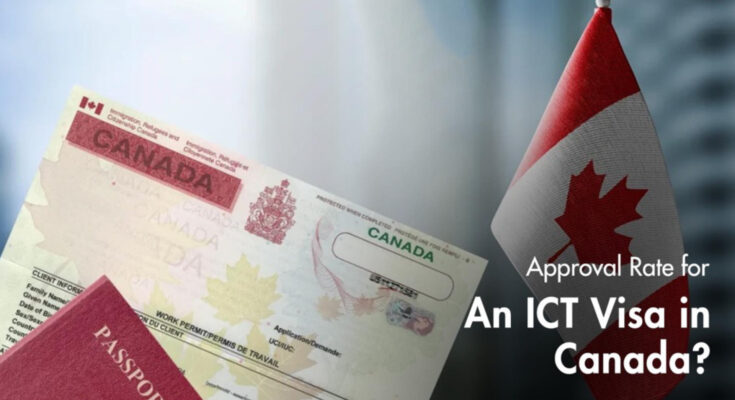Canada, with its thriving economy, stunning landscapes, and welcoming culture, is a dream destination for many professionals worldwide. Securing a work visa to live and work in Canada is often the first step toward realizing that dream.
Why Work in Canada?
Canada offers excellent work opportunities, a high standard of living, and a multicultural environment. With a strong demand for skilled labor across various sectors, from healthcare to technology, Canada has become a global hub for professionals seeking growth and stability. Add in universal healthcare and worker-friendly policies, and it’s no wonder so many choose Canada.
Overview of Canada Work Visa Types
There are two primary categories of work permits: employer-specific and open work permits. Understanding which one suits your needs is crucial before starting the application process.
Types of Work Permits in Canada
Employer-Specific Work Permits
These permits are tied to a specific job and employer. They outline where and for whom you’ll work. The Labor Market Impact Assessment (LMIA) often plays a key role in obtaining this permit.
Open Work Permits
Unlike employer-specific permits, open work permits allow you to work for any employer in Canada, with some exceptions. Spousal Open Work Permits, Post-Graduation Work Permits (PGWPs), and International Experience Canada (IEC) permits fall into this category.
Factors Affecting Canada Work Visa Processing Time
Type of Work Permit
Processing times vary depending on the type of permit. For example, LMIA-exempt permits are generally faster than those requiring an LMIA.
Completeness of Application
Incomplete or incorrectly filled applications can lead to delays. Submitting all required documents in the proper format is key to avoiding setbacks.
Volume of Applications
High demand during certain periods can slow processing. For example, during the start of the academic year or post-pandemic hiring surges.
Applicant’s Country of Residence
Processing times differ depending on where you’re applying from, with some countries experiencing faster service due to agreements or proximity.
Step-by-Step Guide to Applying for a Canada Work Visa
Check Your Eligibility
Review the requirements for the work permit you’re applying for. Make sure you meet all criteria, such as having a valid job offer or being eligible for an LMIA-exempt program.
Gather Required Documents
Typically, you’ll need a valid passport, job offer letter, LMIA (if applicable), proof of funds, and other personal documentation.
Submit Your Application Online or Offline
Most applications are submitted online through the Immigration, Refugees, and Citizenship Canada (IRCC) website. Some applicants, depending on their circumstances, may submit paper applications.
Attend Biometrics Appointment
You’ll likely need to provide fingerprints and a photo at a visa application center (VAC). Book this appointment promptly to avoid delays.
Wait for Application Review
After submission, your application will be reviewed. This stage varies in duration depending on the type of permit and the country you’re applying from.
Receive Decision and Prepare for Arrival
Once approved, you’ll receive your work permit, which will be issued upon entry to Canada. Review its conditions carefully to ensure compliance.
Average Processing Times for Canada Work Visas
Employer-Specific Work Permit Processing Time
Processing typically ranges from 2 to 16 weeks, depending on factors like the LMIA process and country of application.
Open Work Permit Processing Time
These permits generally take 4 to 8 weeks. However, timelines can vary based on program specifics, such as PGWPs.
Temporary Foreign Worker Program (TFWP) Processing Time
Applications under TFWP may take longer due to the LMIA requirement. Processing times can range from 6 to 20 weeks.
Tips to Speed Up Canada Work Visa Processing Time
- Submit a Complete Application: Double-check that all documents are included and forms are filled out accurately.
- Provide Accurate Information: Any discrepancies may lead to delays or rejection.
- Pay Fees Promptly: Ensure all application and biometrics fees are paid without delay.
- Stay Updated on Application Status: Regularly check the IRCC portal for updates or requests for additional information.
Common Challenges During Work Visa Processing
Missing Documents
Failing to include necessary paperwork can significantly delay the process. Always use the provided checklist.
Delayed Biometrics
Not attending biometrics appointments on time can result in application suspension.
Application Rejection
Mistakes in forms or eligibility issues are common reasons for denial. Seek assistance from immigration experts if needed.
Transitioning to Permanent Residency from a Work Visa
Canadian Experience Class (CEC)
Work visa holders often transition to permanent residency through the CEC, a key component of the Express Entry system.
Provincial Nominee Programs (PNPs)
Many provinces offer nomination programs tailored to skilled workers, providing a pathway to permanent residency.
Post-Visa Approval: Preparing for Your Move to Canada
Understanding Work Visa Conditions
Familiarize yourself with the conditions attached to your visa, such as restrictions on job types or employers.
Finding Accommodation in Canada
Begin searching for housing before you arrive to reduce stress and settle in quickly.
Navigating Canadian Work Culture
Adjusting to workplace norms, such as punctuality and teamwork, will help you integrate successfully.
Conclusion
Canada’s work visa process, though detailed, is a clear pathway to living and working in one of the world’s most prosperous countries. By understanding the application process and following the guidelines, you can significantly improve your chances of success. Whether you’re looking for a temporary work experience or a long-term career in Canada, the opportunities are abundant.



